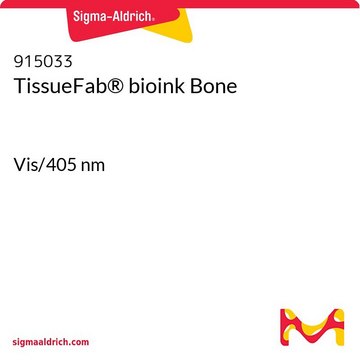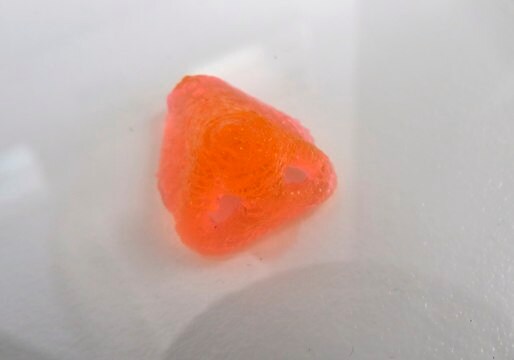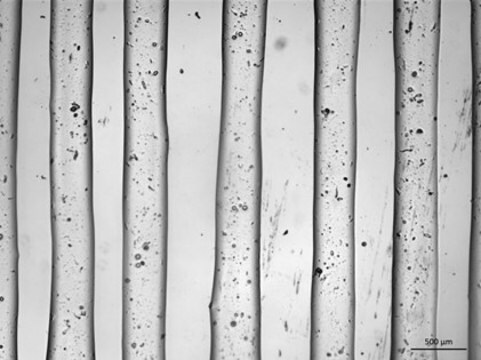915637
TissueFab® bioink Bone
support gel
Sinônimo(s):
3D Bioprinting, 3D printing, Bioink, TissueFab
Faça loginpara ver os preços organizacionais e de contrato
About This Item
Código UNSPSC:
12352201
NACRES:
NA.23
Produtos recomendados
descrição
suitable for 3D bioprinting applications
Nível de qualidade
Formulário
powder
cor
white
aplicação(ões)
3D bioprinting
Procurando produtos similares? Visita Guia de comparação de produtos
Categorias relacionadas
Aplicação
TissueFab® - Bone support bioink is suitable for printing bone scaffold or using as a supporting bioink for bone specific hydrogel/matrix bioink. It is formulated with optimal ratio of PCL and HAp, which shows excellent printability and osteogenic bioactivity. Polycaprolactone (PCL) is a synthetic biodegradable polymer that has been widely used as 3D printed bone scaffold material. Hydroxyapatite (HAp) has a chemical similarity with the mineralized phase of bone which accounts for their excellent biocompatibility and osteoinductive and osteoconductive properties favorable for bone regeneration.
Embalagem
5g in glass bottle
Informações legais
TISSUEFAB is a registered trademark of Merck KGaA, Darmstadt, Germany
Código de classe de armazenamento
11 - Combustible Solids
Classe de risco de água (WGK)
WGK 3
Escolha uma das versões mais recentes:
Certificados de análise (COA)
Lot/Batch Number
It looks like we've run into a problem, but you can still download Certificates of Analysis from our Documentos section.
Se precisar de ajuda, entre em contato Atendimento ao cliente
Já possui este produto?
Encontre a documentação dos produtos que você adquiriu recentemente na biblioteca de documentos.
Liang Dong et al.
Scientific reports, 7(1), 13412-13412 (2017-10-19)
Synthetic polymeric scaffolds are commonly used in bone tissue engineering (BTE) due to their biocompatibility and adequate mechanical properties. However, their hydrophobicity and the lack of specific cell recognition sites confined their practical application. In this study, to improve the
Boontharika Chuenjitkuntaworn et al.
Journal of biomedical materials research. Part A, 94(1), 241-251 (2010-02-19)
Polycaprolactone (PCL) is a synthetic biodegradable polymer that has been approved for use as bone graft substitutes. In this study, PCL scaffolds incorporating hydroxyapatite (HAp) particles were fabricated by combined solvent casting and particulate leaching techniques. The average pore dimension
Mitchell A Kuss et al.
RSC advances, 7(47), 29312-29320 (2017-07-04)
Reconstruction of complex, craniofacial bone defects often requires autogenous vascularized bone grafts, and still remains a challenge today. In order to address this issue, we isolated the stromal vascular fraction (SVF) from adipose tissues and maintained the phenotypes and the
Nossa equipe de cientistas tem experiência em todas as áreas de pesquisa, incluindo Life Sciences, ciência de materiais, síntese química, cromatografia, química analítica e muitas outras.
Entre em contato com a assistência técnica







